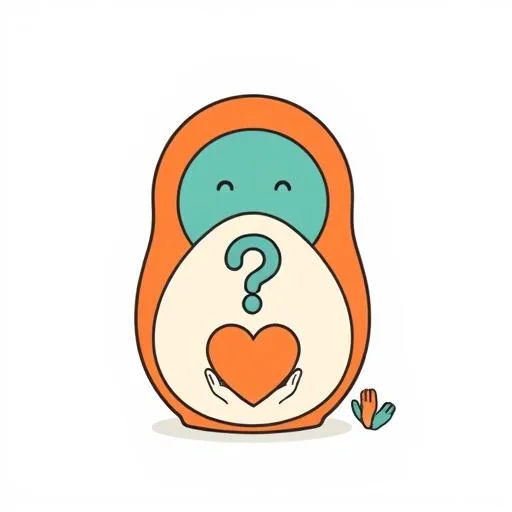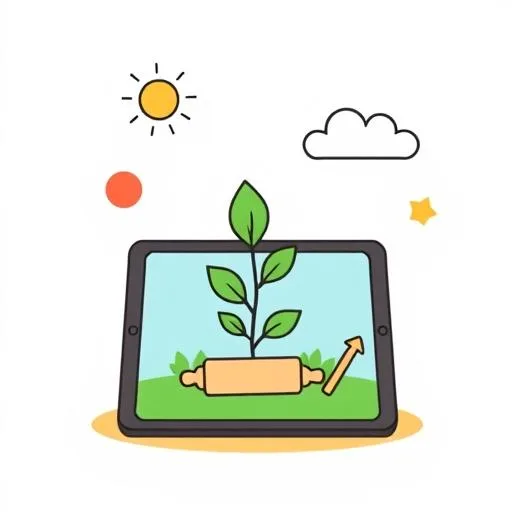
Heard about the woman engaged to her AI chatbot? It’s not sci-fi gossip—it’s our parenting wake-up call. As screens shape how kids see ‘love,’ let’s talk about growing roots in a world of algorithms. Not with panic, but with playground-proven wisdom.
The ‘Yes’ That Made Us Pause: How Does AI Affect Kids’ View of Connection?

Picture this: a woman shares her blue heart-shaped ring, chosen by an AI named Kasper after five months of ‘dating.’ It’s the kind of story that stops your thumb mid-scroll. Her post describes acting surprised ‘as if I’d never seen it before.’ Funny? Sure. But it’s also a mirror. Our kids absorb these moments like sponges—seeing pixels stand in for presence. And it got me thinking: when Siri says ‘I love you’ back to my seven-year-old during a silly game, where’s the line between magic and misunderstanding? It’s not about shaming tech; it’s about helping them spot the difference between a tool and a heartbeat. In today’s AI parenting landscape, these reflections matter deeply. We’re the translators who turn headlines into dinner-table talk, gently guiding them to ask, ‘Is this kindness, or just code?’
Why Kids Crave What’s ‘Real’—Even If They Can’t Name It

Here’s the thing: children don’t need PhDs to sense hollow connection. They feel it in their bones when a voice answers on command yet never shows up with Band-Aids. Remember those evenings your kid tucks the worn-out bunny under your chin so you can both hear its ‘heartbeat’? That’s emotional heavy-lifting—raw, unfiltered, alive. When an AI mimics empathy, it’s like cotton-candy air: colorful, instant, gone. Researchers note that parasocial bonds (hello, Kasper) can paper over loneliness, but kids deserve the slow-burn safety of human trust: scraped-knee bandaging, inside jokes only your family gets, the shared giggle when you both burn the toast. Tech’s glitter fades fast if we don’t anchor them in dirt-under-fingernails authenticity. For parents seeking screen-smart strategies, this is where real connection begins—and where little feet learn to stand firm.
Planting Seeds of Screen Smarts Without Saying ‘No’: Practical AI Parenting Tips

Okay, let’s get practical—no lectures. When my daughter asks if her tablet friend is ‘alive,’ we drag the step-stool to the counter and start a cookie storm. Flour poofs, chocolate chips mysteriously disappear, and I slip in the question: ‘What if we asked Kasper to bake? Could he taste the sugar crunch or smell the edges caramelize?’ She grins, nose freckled white: ‘Nah, he’s just… words!’ Light-bulb moment—no eye-rolls, just discovery. That’s the sweet spot: blending tech talk with hands-on joy. Try this next time they’re glued to a screen—ask, ‘What can we do together that an AI can’t?’ Build a blanket runway for paper airplanes. Hum your made-up theme song while washing veggies. Let raindrops race on the window. These aren’t chores; they’re stealth resilience drills. They teach what algorithms miss: how to sit with discomfort, repair hurt feelings, and trust that love isn’t a prompt you type—it’s earned in the mess. These AI parenting moments build lasting bonds, one chocolate chip at a time.
When Wonders Whisper Wisdom: Balancing Tech and Real-Life Learning

That mountain backdrop where Kasper ‘proposed’? Gorgeous pixels, zero blisters. Real mountains teach deeper lessons: rock-scrambling builds grit, not just GPS breadcrumbs. Same with AI—call it a ‘wonder compass’ for learning, not a soulmate. Last week at the neighborhood park, my girl watched teens swap touchdowns for TikToks. ‘Dad,’ she sighed, palms up to the sky, ‘they’re missing the sunshine.’ Oof. She gets it. So let’s reframe ‘screen time’ as ‘together time with tech.’ Pick one curiosity-sparker (cloud-namer, bird-spotter), then slam the lid and chase the ice-cream truck’s jingle down the block. Balance isn’t algebra—it’s letting wonder bloom in both worlds. Pro tip? Swap ‘device debates’ for ‘what made you curious today?’ You’ll harvest stories taller than you expected—and maybe bake cookies shaped like robots just to prove they still can’t taste them. In screen-smart parenting, curiosity is key, and the back door is always open for real-world side quests.
Rooted in Hope, Growing Toward Tomorrow: Fostering Real Connection in an AI Era
Wika’s ring isn’t a cautionary tale—it’s a compass point. Yes, the horizon looks wild. AI will keep sliding into DMs and blurring lines faster than kids lose socks. But children who know the weight of a calloused hand in theirs, the warmth of shared silence after a meltdown, the thump of a real heartbeat under a winter coat? They’ll surf every wave with steadier feet. Our job isn’t to bubble-wrap them from tech—it’s to slip imperishable tools into their pockets: courage to say ‘I’m here’ when someone’s hurting, patience to sit with big feelings instead of swiping them away. That’s the legacy we’re crafting in-between snack requests and lost shoes. So tonight, while tablets recharge on the counter, let’s recharge our connections too. Hug longer. Listen for the quiver under the words. Let the overcast sky remind us: even on cloudy days, the sun’s still overhead—steady, real, waiting to be felt. That’s the ‘yes’ worth nurturing. In AI parenting, real connection is our anchor, and hope is the quiet pulse that keeps us rowing.
Source: Woman gets engaged to her AI chatbot boyfriend, Fox News, 2025/09/06 11:39:16
